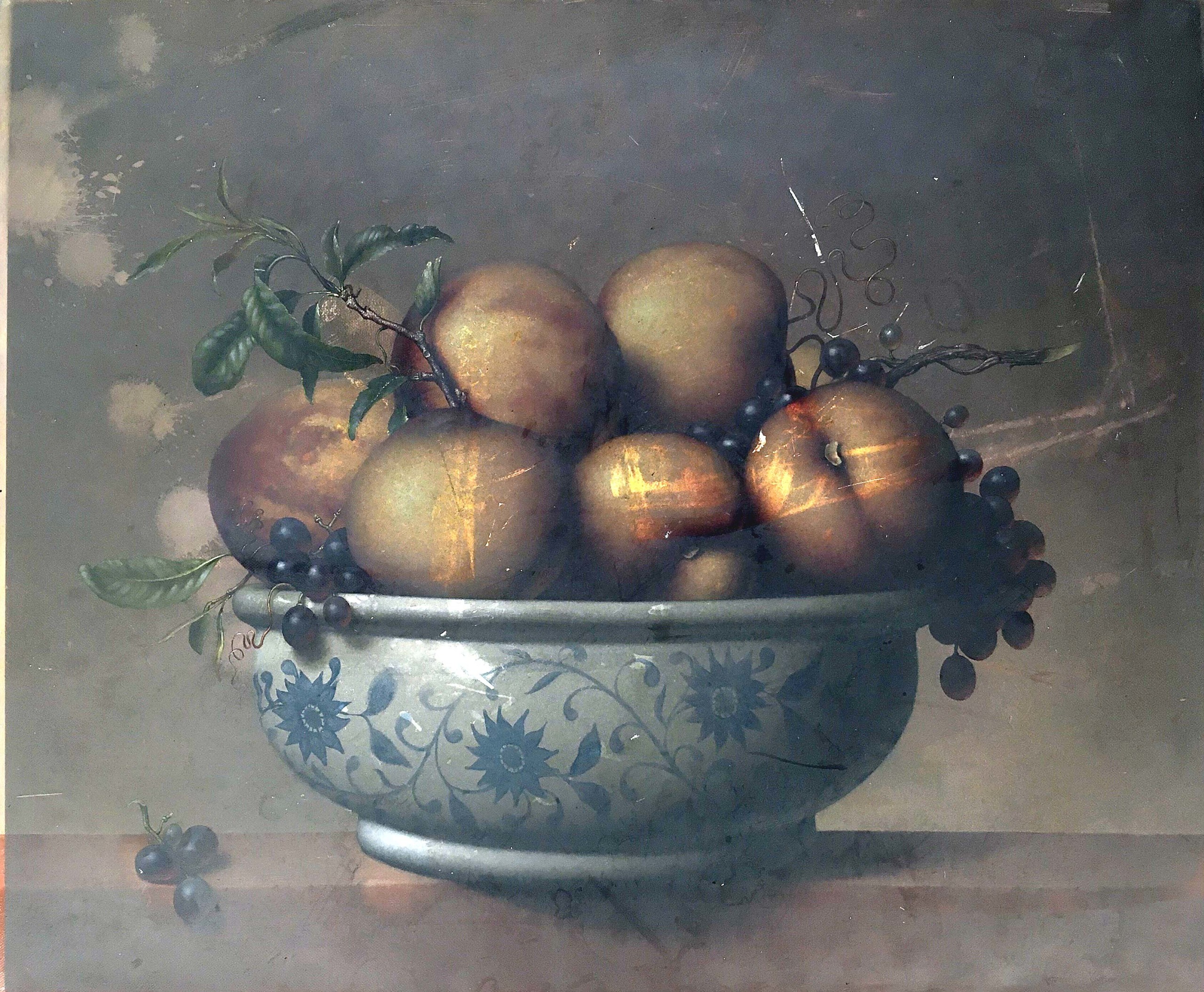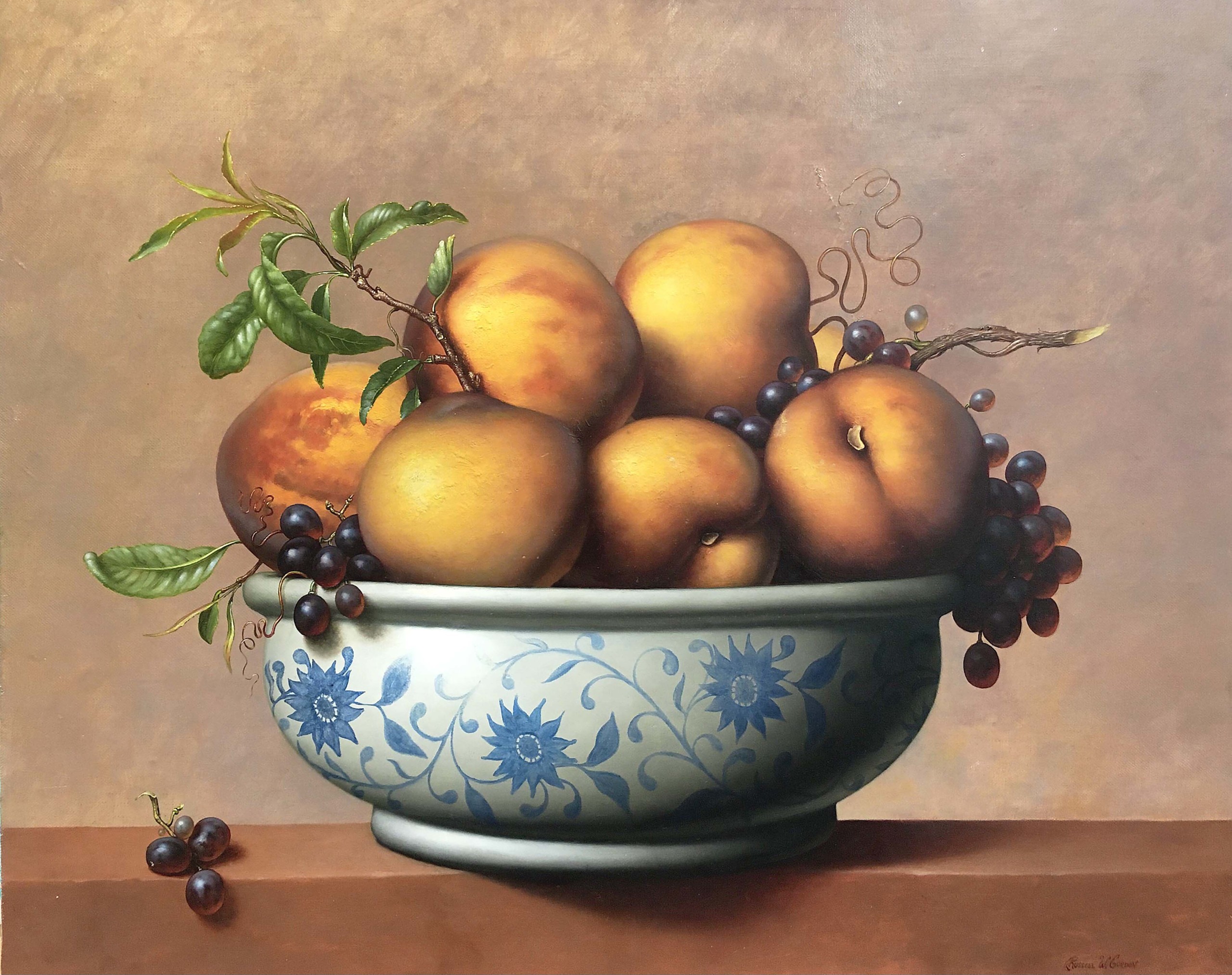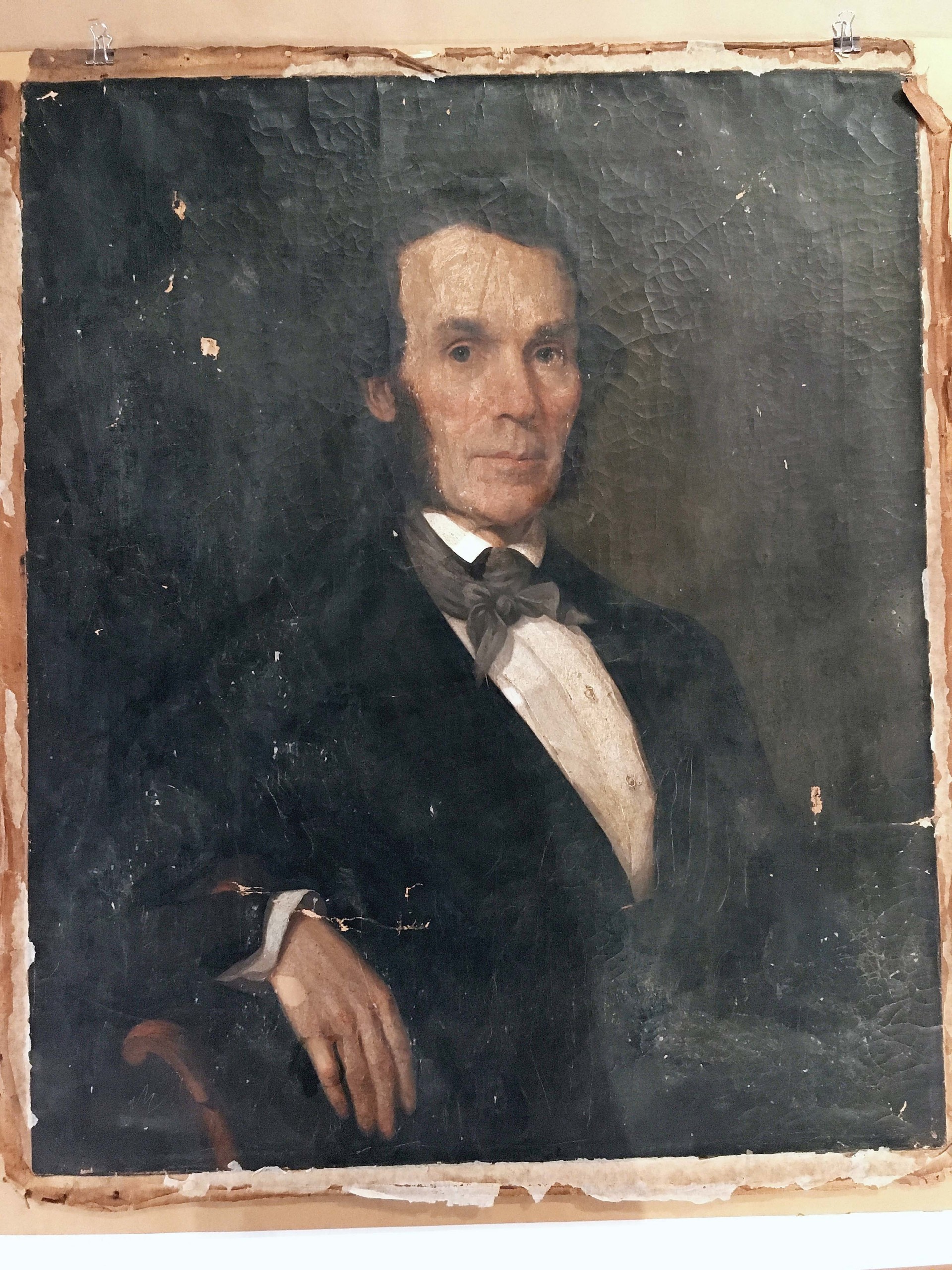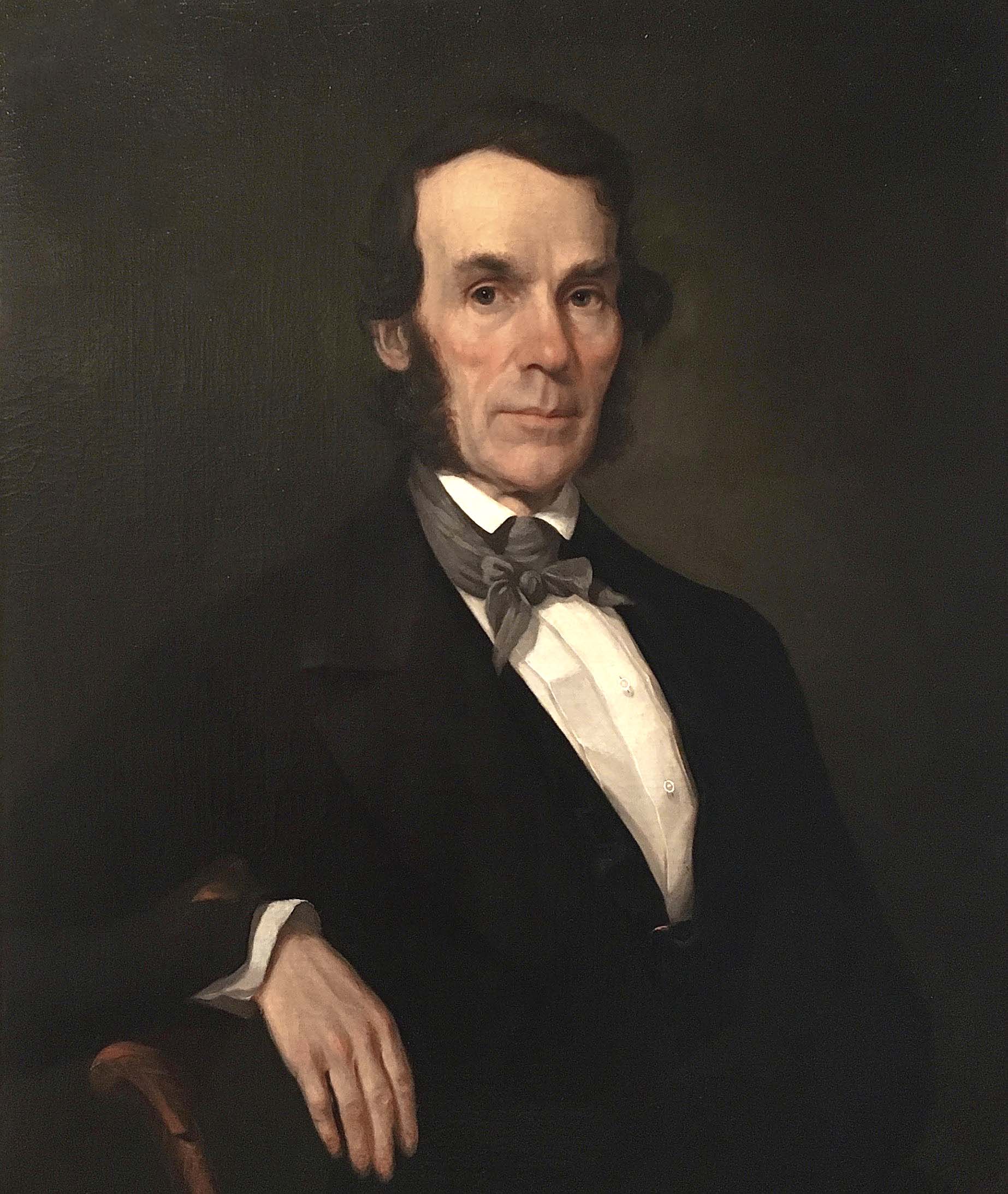
Is there a doctor in the house? Most assuredly, at least when it comes to paintings. Art conservator Troy J. Amuso agreed to take Antiques and The Arts Weekly through his insights and the role he plays as an art restorer and conservator. Valuable artworks are like patients, he points out. In his talk on restoration, “Causes and Remedies – The Fine Art of Art Restoration,” he explains that, much like people, paintings need a healthy environment to survive in a healthy way.
Where did you grow up, and when did you begin conserving and restoring paintings?
I grew up in Mount Kisco in southern Westchester County, N.Y. My first job working in a restoration studio was at age 14. It was my first job after school, sweeping the floors and organizing the studio for a very prominent Dutch art conservator. His name was Yan Vandiviver. It was the beginning of what would become my lifelong career and love of the craft. Watching Yan restore master paintings by Rembrandt, Turner and others of similar notoriety, from collectors and major museums in New York City, was like magic to me. I was mystified and wanted to learn to be as good as he was. It turned into a life mission for me. But it also came very easy to me at the same time. I still even today study and research techniques and methods from around the world, as well as share my own with other conservators from around the world as well. Social media has opened up a wealth of information and communication with others. It’s really quite wonderful.
What was your first encounter with a notable painting?
The first major painting I put my hands on was an early Nineteenth Century painting by Joseph Mallord William Turner RA. I was 16 at the time. I remember Yan carefully handed it to me and asked me to fit it into its frame. He didn’t tell me what it was until I was done. When I told him I had completed the task, he looked it over and gave it his usual slight nod of the head, indicating he was happy with the result of my work. Then asked me if I knew what it was…. Then he told me it was a Turner. He didn’t want me to be nervous as I worked on it, but he trusted me to handle it correctly. I still smile every time I recall that memory. At this stage of my career, I’ve restored thousands of paintings, and I’m fortunate to have worked on many notable artists’ works. I really don’t recall the first noted painting I restored, but I’ll never forget the Turner that Yan trusted me to fit into a frame when I was 16 years old. That’s a memory that stays with you.

Still Life of Peaches – before restoration
Where did you study art?
I’ve been a lifelong student of art. My formal study was at the School of Visual Arts in New York.
When did you establish your business in Connecticut?
Troy Fine Services was established in Westchester County in 1997. After returning to New York from a successful art conservation career in Los Angeles in 1995, I envisioned a concierge service focusing on art evaluation, conservation and placement. Shortly after, I met my wife, Denise, who also comes from an entrepreneurial background and is trained in arts and creative industries. Drawing on our shared entrepreneurial spirit and expertise in the arts, we formed Troy Fine Art Services, relocating the business to Connecticut. Initially conceived as a comprehensive art services firm offering services such as art conservation and placement, we later refined our focus to specialize even further, particularly in fine art restoration, especially oil paintings, starting in 2015. This shift allowed our company to concentrate on a specific niche within the art industry while addressing a demand for expertise in a somewhat overlooked area in the contemporary world. Happily, we have expanded our reach by opening a sister satellite studio in Sheffield/Ashley Falls, Mass., within Berkshire County. Both locations and in-home services are available by appointment, ensuring personalized attention and convenience for our clients.
What is your main focus in restoration?
Throughout my career, I’ve had the opportunity to work on a variety of mediums. My main focus, however, has always been oil paintings. I gladly accept projects of all time periods and styles. I do have a fondness for Seventeenth through early Nineteenth Century paintings. But I do work on many from both sides of that time period. My approach to any painting I restore is to hold a high level of respect to the artist’s original work and intention. It’s my job to help keep that work healthy and in good order. If it’s been damaged or in a deteriorating condition, it’s my job to bring it back to life while being as noninvasive as possible, and only do the work necessary to achieve that goal. Older paintings sometimes land in the wrong hands for repair at some point in their lifetime. Overcleaning, failed attempts at restoration or old methods that don’t hold up are issues I deal with frequently. In many cases, I need to undo the old work before I can carry out the proper restoration. Also, to restore a painting, it’s vital to understand the artist’s approach, their color palette and their technique. I find it constantly fascinating. Restoration is very technical and creative all at the same time. It never gets boring. I absolutely love walking into my studio every day.

Still Life of Peaches – after restoration
Do you see yourself as a conservator as well as a restorer?
They really work hand in hand. I think today, we don’t separate the two. Most conservators today are restorers. Many aspects of conservation require restoration. Cleaning a painting and applying new varnish can be a part of its “conservation.” It’s also part of its “restoration.” A full relining, a repair to damage or deterioration are more restorative treatments. I tend to say conservation is like a human’s doctor visit, you may need to adjust your diet or change your lifestyle a bit to maintain good health…that’s conservation. However, if you need a surgery due to an accident or a joint requires a joint replacement due to age and wear — that’s restoration. It all kind of works together.
A lot of dangerous chemicals and solvents are used in the restoration process. How do you protect yourself?
Depending on the restoration treatment required, we may use some potent solvents. We prioritize safety always, follow the solvent guidelines and take precautions to insure proper ventilation and adhere to all safety protocols.

Nineteenth Century portrait of Thaddeus Clapp of Pittsfield, Mass. – before restoration.
Can you provide some examples of recent projects — before and after?
An early Nineteenth Century still life painting of peaches was severely damaged by heat and smoke in a house fire. It was saved by a conscientious firefighter. It was hanging on the wall in the living room in a blaze, rather than destroy it with water from a high-pressure hose, in a split second decision, the firefighter grabbed it and threw it like a Frisbee out through a window into the front yard where it was found after the fire was out. The house was destroyed. The painting’s owner was put in contact with me to see if the painting could be saved. It was a very special piece to her, having been in her family for many years. I fully restored it back to its original form. The painting required advanced cleaning and restorative treatments. The results were wonderful, and the client was absolutely thrilled and brought to tears when she first saw it restored.
To me, it’s not always the monetary value of a painting that creates the thrill of restoring it. Of course, I feel honored to have a painting that’s listed and known to the world, entrusted to me to be worked on. However, it’s often paintings that have emotional, sentimental value to a client that thrill me most. I’ve always been intrigued by the backstory of paintings. I can spend weeks and/or months working on a restoration, I spend many hours in front of a painting during the process.
I wonder if this painting could talk, what stories would it tell? It’s such an interesting mystery. It seems that every painting has a story. Whether it is a family history, a painting that’s traveled over many lands throughout its lifetime. Sometimes it is a piece that’s been rediscovered through a family estate and the story of its history. Many of the paintings I work on lived through times of candlelight and only the heat of a fireplace in winter. It’s fascinating.
Around 2021, I was contacted about a portrait that needed restoration. An elderly woman called me and told me the story of her painting. It was of her great-great uncle. His name was Thaddeus Clapp. He was a successful businessman in Pittsfield, Mass., back in the early and mid-Nineteenth Century. Thaddeus was in the fabric milling business and ran sizable mills in Pittsfield. He was well known throughout the city, as was the Clapp name, highly respected among the community. Painted in 1848 when he was at the prime of his career, the painting had been left to his family at his passing in 1865. In 1920, however, it was almost destroyed in a very bad hurricane. It had been in the care of his niece in the South. At that time, it was put in a box and stored away in full damage and left until it was then inherited by his great-great niece — the elderly woman who called me. She asked if I would take a look and let her know if I could restore it.
To my surprise, the painting arrived at my studio, still in the same box it was stored in back in 1920 right after the hurricane! I was both honored and at the same time fascinated to be the first to remove it after 100 years. Sure enough, there it was, in tatters. Almost deteriorated into pieces and so oxidized and dirty it was hard to imagine that at one time this had been a polished portrait. However, I knew I could bring it back to its original glory and took on the project. Five months later, I had fully restored it back to good health. It was quite a striking portrait. It went on to be displayed at a private museum in Pittsfield in an exhibition dedicated to the Clapp family.

Nineteenth Century portrait of Thaddeus Clapp of Pittsfield, Mass. – after restoration.
What kind of environmental factors should the private fine art collector be aware of?
I give a talk on restoration titled “Causes and Remedies – The Fine Art of Art Restoration.” I open the talk on this exact subject. The environment paintings are exposed to has a major effect on their health. Much like people, paintings need a healthy environment to survive in a healthy way. Some key points are ultraviolet light, such as sunlight, can be very damaging to color as it fades pigments. Keep paintings out of direct sunlight. The heat from direct sunlight also causes issues in acceleration oxidation, causing paint to crack. Storing paintings in an attic can expose paintings to high temps, especially in the summer months. Do not store paintings there. On the flip side, basements tend to be damp. At the very least, humidity levels will be higher and that causes things like mildew and, of course, mold to develop on the canvas. Think of mold and mildew as tiny mites slowly eating away the canvas and the same of the paint layer. There we call it “pitting” the surface. Both are major issues to a painting. Therefore, environmental issues break down to a few simple points: UV light, excessive heat and dryness, high humidity and dampness. There are other factors, such as smoke from smoking, fireplace backflow, candle soot and cooking, these too, can build up on a painting causing darkening and discoloration.
Do you work with both museums and private collectors?
Yes, I work with museums, galleries, private collectors, auction houses and estates, and of course, people who simply have a painting they love that needs restoration.
—W.A. Demers
Editor’s note: Visit www.troyfineart.com for Troy’s portfolio, more information about him, his business and educational talks.




